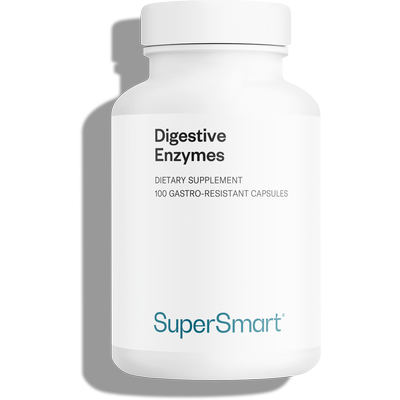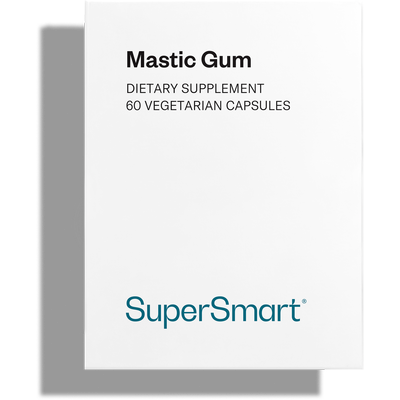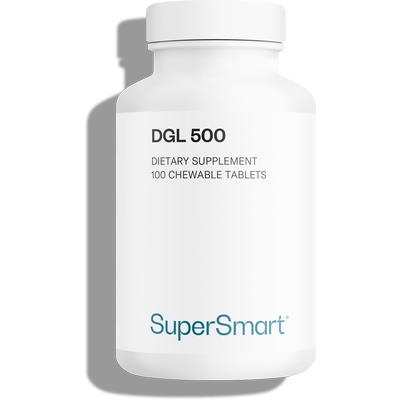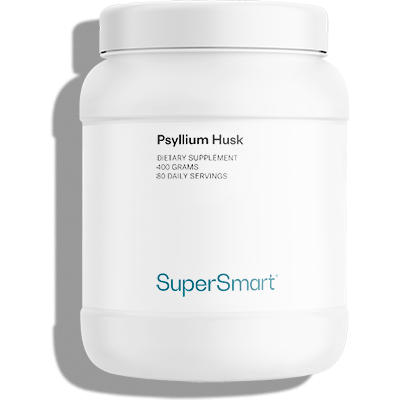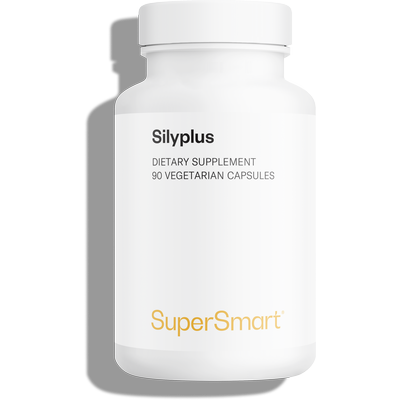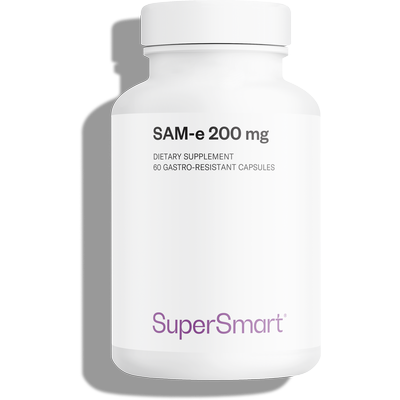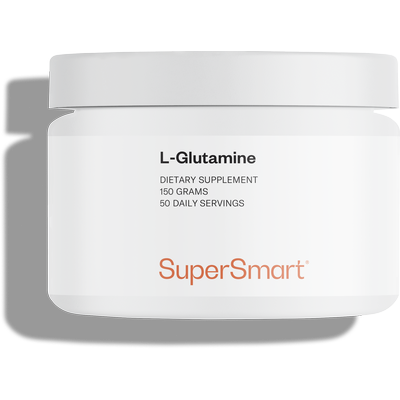22-03-2016
Digestive disorders
 There are many supplements which, combined with good dietary management, provide an effective, natural solution to treating digestive disorders: ginger for nausea and vomiting, mastic gum for gastric ulcers, SAMe and silymarin for liver diseases, artichoke extract for gallstones, fibre for constipation and probiotics for diarrhoea.
There are many supplements which, combined with good dietary management, provide an effective, natural solution to treating digestive disorders: ginger for nausea and vomiting, mastic gum for gastric ulcers, SAMe and silymarin for liver diseases, artichoke extract for gallstones, fibre for constipation and probiotics for diarrhoea.
Nausea and vomiting
Nausea and vomiting can be triggered by amongst others, gastrointestinal infections, indigestion, drugs, travel sickness, pregnancy and psychological factors. They have a number of nutritional consequences. Temporary but acute vomiting can lead to potassium deficiency, resulting in muscle weakness, heart rate problems, reduced intestinal tone or even gastrointestinal bleeding; it can also cause sodium depletion. Chronic sickness can mean a fall in energy intake leading to malnutrition and nutrient deficiency. Sufferers are advised to sip cold drinks, split meals into lesser amounts throughout the day, eating small mouthfuls and chewing well. It is best to eat starchy, salty or low-fat foods and avoid foods that are too sweet, pungent or strongly-flavoured. In cases of nausea, vomiting can be prevented by drinking small amounts of clear, sweet fluids (fizzy drinks and fruit juice). Rest is also recommended since activity increases nausea.Ginger is a large, tuberous plant from South Asia which is today widely cultivated in almost all tropical and sub-tropical countries (China, India, Nigeria, Australia, Jamaica and Haiti). There are references to ginger in early Sanskrit, Chinese, Ancient Greek, Roman and Arabic texts (Bone, 1997). It has been used medicinally for thousands of years to treat stomach ache, diarrhoea and nausea. Investigated as an antiemetic treatment (Phillips et al., 1993), a dose of 1g of ginger a day was found to reduce post-operative nausea among a group of 120 women who had undergone gynaecological surgery. 40 of the women were given 1g/day of ginger, 40 the anti-sickness drug metoclopramide (10mg/day) and 40 a placebo, following surgery.
There was a lower incidence of nausea and vomiting in those patients treated with either the ginger (21%) or the drug (27%) compared with those given the placebo (41 %).
Ginger has emerged as a promising and effective prophylactic, particularly beneficial in surgery. Ginger is also effective for treating morning sickness (Vutyanich et al, 2001). Seventy women who were approximately 17 weeks’ pregnant were given 1g/day of ginger or a placebo for four consecutive days. They had previously recorded the number of times they were sick during the 24 hour period immediately prior to starting the treatment. 87.5% of the women taking the ginger reported fewer episodes of vomiting compared with 28% in the placebo group. Ginger is also good for treating nausea caused by psoralen, a drug prescribed for psoriasis (Meyer, 1995). It has also been shown to be effective at relieving sea-sickness. A dose of 1g of ginger improved sea-sickness symptoms (vomiting and cold sweats) in a group of 80 naval cadets unaccustomed to sailing in rough waters (Grontved, 1988). In Germany, where the powdered rhizome is used for relieving digestive problems and for preventing motion sickness (2g/day), ginger is recognised as having spasmolytic properties in animals. In humans, it is recognised as having antiemetic effects, as well as affecting the strength of cardiac contractions and stimulating intestinal contractions and saliva and gastric secretions. Citing clinical studies on ginger, the European-American- Phytomedicine-Coalition (EAPC) has petitioned the FDA to recognise ginger in the United States as an OTC medication for nausea and motion sickness (Pinco and Israelsen, 1995). A standardised ginger extract (Zintonae, Dalidar Pharma) has been approved in Germany, Switzerland, Austria and Finland for preventing travel sickness (Terme, 1999).
Peptic ulcers
Peptic ulcers occur in the stomach or duodenum, producing abdominal pain and sometimes bleeding. They are often due to Helicobacter pylori infection but can also be caused by nutritional factors (food allergies), stress, smoking, consumption of alcohol, coffee (even decaffeinated), tea or aspirin.During the Second World War, the stress brought on by the London Blitz led to a 50% increase in incidence of ruptured peptic ulcers (Stewart et de R. Winser, 1942). Nutritional management includes the elimination of dietary factors that promote ulcers, such as alcohol. Sugar consumption is also problematic since it increases gastric acidity which induces ulcer symptoms (Yudkin, 1980). There is also a link between salt intake and risk of gastric ulcer (Sonnenberg et al., 1986). However, there is not yet any evidence that restricting salt and sugar intake is beneficial in this respect. Cabbage juice, on the other hand (1 litre for 10-14 days), may accelerate healing – carrot juice can be added to improve the taste (Noess, 1986).
In cases of duodenal ulcer, taking vitamin A encourages the development of mucosal tissue (present in the stomach and intestines). A 15mg dose of retinol taken three times a day was shown to heal peptic ulcers (Patty et al., 1982, 1984), though such doses must on no account be taken by women who are, or are trying to become, pregnant. A study on rats showed that zinc supplementation helped repair damaged tissue and provided protection against stomach ulceration (Pfeiffer et al., 1980). Another study showed a dose of 88mg of zinc taken three times a day, healed gastric ulcers three times faster than placebo (Frommer, 1975). However, fractional doses of 25-50mg/day are generally believed to be sufficient, accompanied by 1-3mg/day of copper.
Glutamine is used to treat peptic ulcers as it is the principal source of energy for gastric and intestinal cells. Suggested doses range from 500mg to 1000mg, two or three times a day Research has shown that taking 500mg dimethyl sulfoxide (DMSO) four times a day reduced relapse rates for peptic ulcer better than drug treatment, due to its antioxidant activity (Salim, 1993).
A number of medicinal plants have demonstrated efficacy in this respect.
Liquorice root relieves pain associated with inflammation of the digestive mucosa, and increases production of mucin which protects cells from acidity of gastric juice. It contains flavonoids which inhibit H. pylori.
Mastic gum (Pistacia lentiscus) significantly reduces damage in the gastric mucosa. In a rat study in which ulcers were induced by pyloric ligation, aspirin, phenylbutazone or reserpine, oral supplementation with 500mg/kg of mastic gum reduced gastric acidity and had a cytoprotective effect against alcohol in 50% of animals (Al-Said et al., 1986). Mastic gum’s anti-bacterial activity against H. pylori has also been demonstrated (Marone et al., 2001). Concentrations of 125mcg/ml and 500mcg/ml respectively destroyed 50% and 90% of the 16 strains tested. It works by producing abnormalities, alterations and fragmentation in H. pylori cells, making it difficult for the ulcer-causing bacteria to survive in the body. Extracts of the herb corydalis, at a dose of 90-100mg/day, have been shown to bring improvements to 76% of patients suffering from gastric and duodenal ulcers (Chang, 1986).
Liver disease
Liver disease requires extreme care in view of the risk of malnutrition (especially protein). Malnutrition is caused by the development of ascites (accumulation of fluid in the abdominal cavity) which induces anorexia, increased energy expenditure, recurrent nausea which reduces energy intake, and malabsorption due to the disease and alcohol consumption.Nutritional recommendations depend on the disease and any complications.
S-adenosyl-L-methionine (SAMe) is produced from L-methionine and adenosine triphosphate. SAMe plays a key role in the synthesis of nucleic acids, proteins and polyamines. It is also a source of cysteine which enables glutathione to be produced. In primates, high alcohol consumption leads to significant depletion of glutathione. Activity of SAMe synthetase decreases in the presence of cirrhosis. Alcohol consumption reduces levels of SAMe in the liver (Lieber et al., 1990) which cannot be restored to normal levels by supplementing with methionine. Therefore, the only way to combat alcohol-induced liver damage is to take SAMe. Research has shown that, following oral administration of SAMe, blood concentrations increase (Bombardieri et al., 1983), and the SAMe is then captured by hepatocytes (Travers et al., 1984; Pezzoli et al., 1978; Engstrom, 1987). The rise in blood levels of SAMe induces an increase in liver concentrations. In intrahepatic cholestasis, SAMe has been shown to produce improvements in liver function tests and regression of symptoms (itching) (Osman et al., 1993). It has demonstrated efficacy in treating severe cholestasis in pregnancy and jaundice due to androgens and oestrogens. Researchers found that SAMe prevented total parenteral nutrition-induced cholestasis in rats (Belli et al., 1993). The potential clinical benefits of SAMe for sufferers of cirrhosis are increased conjugation between bile salts and taurine (Angelico et al., 1994), prevention of depletion of hepatic glutathione (Vendemiale et al., 1989), correction of glutathione and cysteine levels (Loguercio et al., 1994), and finally, a reduction in cirrhosis-induced changes to erythrocyte membranes (Muriel, 1993).
Silymarin is extracted from milk thistle seeds (Silybum marianum) and contains three flavonolignans (silibinin, silychristin and silydianin. A dose of 420mg/day for four weeks was shown to reduce transaminases and bilirubin (Salmi et Sarna, 1982). Six months’ treatment led to decreases in the following disease parameters: ASAT, ALAT, g-GT and bilirubin (Feher et al., 1990). Silymarin stabilises the cell membrane and increases protein synthesis by accelerating regeneration of damaged liver tissue.
Through its antioxidant activity, it prevents lipid peroxidation of liver cells due to xenobiotic compounds (alcohol and certain drugs). The percentage of cirrhosis patients surviving for four years was shown to be 58% among those taking silymarin compared with 39% in a placebo group (Ferenci et al., 1989). Silymarin also reduces insulin-resistance in diabetics with cirrhosis. It is one of the best-documented agents for treating liver damage (Hikino and Kiso, 1988 & Morazzani and Bombardelli, 1995).
The use of multivitamins is recommended for anyone suffering from chronic liver disease, especially those who drink alcohol. Magnesium should be regarded as a genuinely liver-protective ion as it selectively attaches itself to damaged liver tissue. It promotes glycogen synthesis, prevents lipid infiltration following partial hepatectomy, improves hepatic circulation, stimulates various enzymes (phosphatases, lipases, liver aminoacyl-tRNA synthetases), stabilises mitochondria, and increases cholesterol elimination via bile. Conversely, deficiency in magnesium leads to functional lesions, and combined with alcohol intoxication, represents a potential mechanism for the development of connective lesions in alcoholic cirrhosis (Rayssiguier et Durlach, 1981; Rayssiguier et al., 1985). This may be due to acetaldehyde-induced increases in peroxide production (Lewis and Paton, 1982). In any case, it appears that in those who consume alcohol, there is a direct correlation between severity of damage to the liver parenchyma and low blood concentrations of magnesium.
Gallstones
Gallstones are the most common disease of the biliary tract. They form in the gallbladder where, after several years, they can potentially lead to cancer. The source of the problems gallstones cause remains unknown since there is no relation between their development and their size, shape, density, number or composition. The majority are multifaceted and are over 2cm in diameter. Their rate of growth is 1-2mm per year. They are composed of phosphate, palmitate or bilirubin, cholesterol and calcium salts, the proportion of which increases with age.Extract of artichoke leafhas been used as a choleretic and diuretic since Roman times: it stimulates the appetite and lowers cholesterol and triglyceride levels. It increases bile and urine flow and protects hepatocytes against toxicity from ethanol and carbon tetrachloride. Patients presenting with dyspepsia (digestive discomfort) and/or diseases of the bile duct or liver found their symptoms improved (abdominal pain, flatulence, nausea, loss of appetite, constipation and intolerance of fats) after four to six weeks’ treatment with artichoke extract (Kraft, 1997). In a group of 20 males with acute or chronic metabolic disorders, and treated with 320mg of standardised extract of diluted artichoke, bile secretions increased by 127% after 30 minutes, 151% after 60 minutes and by 94% after 90 minutes (Hepar SL fort, Seturner).
Artichoke extract helps treat digestive disorders due to decreased bile secretions leading to poorer absorption of fats (Kirchhoff 1994). Supplementing with artichoke extract can lower cholesterol by 40% and triglycerides by 20%. The increased secretion of bile acids stimulates intestinal motility and fat digestion, hence the benefits for non-ulcerous dyspepsia and intestinal ‘irritation’. Artichoke extract, is, however, contraindicated in cases of bile obstruction.
Constipation
Constipation is caused by a slowing of intestinal movements. When at a pathological stage, this leads to discomfort and even abdominal pain. Constipation - which is usually defined by doctors as being fewer than three bowel movements a week - affects 4% of the population. It is associated with haemorrhoids, diverticulosis and appendicitis. Its prevalence is greater in women and increases with age. While it is most often due to poor dietary habits, there are a number of other factors such as the colon absorbing too much water from stools or greater contact time between the alimentary bolus and gut flora. Certain diseases (hypothyroidism, multiple sclerosis, Parkinson’s disease, damage to the spinal cord) can also cause constipation. The best way of addressing constipation is through good dietary management.Laxatives are not very effective – they do not tackle the root cause and can result in intestinal upset.
Nutritional management includes good hydration, preferably from drinking mineral water, because fibre captures water and increases the volume of the alimentary bolus. 1.5-2 litres of fluid a day, combined with a good intake of fibre, will thus reduce constipation (Anti et al., 1998). Physical activity is also important because it stimulates gastrointestinal peristalsis. The basic approach, particularly for children, should be a gradual increase in fibre intake, prioritising wholegrain cereals and bread, and fruits and vegetables. Fibre is a dietary component made up of non-digestible carbohydrates. Supplementing with bran can also be beneficial, but it is important to use it correctly (2 teaspoons = 3g of fibre) to avoid the risk of obstruction and malabsorption of micronutrients. Such risks can be reduced by consuming bran as wholegrains, which also offers superior efficacy. Supplementing with fibre provides a number of benefits: fibre binds with bile acids and fats, it reduces feelings of hunger during a meal as well as post-prandial glucose spikes, it shortens duration of transit decreasing the formation of toxic by-products, and it lowers both cholesterol absorption and growth of physiological gut flora. Although the effects are sometimes temporary, a higher intake of fibre combined with good hydration remains the best way to treat constipation naturally. Diarrhoea Diarrhoea is often caused by disruption to gastrointestinal homeostasis, which is sometimes due to infection. It can result in significant loss of body fluids and electrolytes. In infants under two years old, great care should be taken to compensate for this loss of fluid by administering a treatment balanced in electrolytes. Since diarrhoea in young children can be due to lactose intolerance, treatments that are low in, or free from, lactose (delactosed milks) can be given.
In adults, many foods can cause diarrhoea. During an episode, it is advisable to restrict consumption of ready-cooked meals, and depending on its severity, to consume clear soups, tea, sugar-free mineral water and sports drinks (for their electrolyte content). Good rehydration free from infectious agents, together with sodium intake are very important, particularly in cases of traveller’s diarrhoea. Low-fat, high-protein food (chicken breast, lean fish and egg whites) are also well-tolerated.
Dairy products, especially liquid or non-fermented products, should be completely avoided, as should raw fruits and vegetables. Vegetable charcoal is obtained from the carbonisation of specially selected wood. Its network of pores makes it one of the most powerful, natural absorbent substances currently known. Vegetable carbon remains in the digestive tract where it is very well tolerated. It has the ability to absorb various substances, particularly bacteria, toxins and gas: it can therefore be very useful in treating diarrhoea.
The most common pathogenic microorganisms found in Western countries are rotavirus (acute childhood diarrhoea), Clostridium difficile (diarrhoea following antibiotic treatment), Escherichia coli, Salmonella and Shigella. Probiotics are defined as living microorganisms which, when ingested in sufficient quantities, exert a positive effect on health. They can be consumed in three forms – lyophilised, fermented milk or yogurt.
The lyophilised form is available as a supplement, as either a capsule or a sachet, the latter to be taken with plenty of water. Legally, the term ‘yogurt’ only applies to products that contain the two bacteria Streptococcus thermophilus and Lactobacillus bulgaricus; this yogurt has beneficial effects in treating diarrhoea. In children with diarrhoea, the majority of those given yogurt found it had gone in less than three days whereas in those treated with an antibiotic, it lasted at least four days (Niv et al., 1963).
Clostridium difficile is responsible for 20%-40% of cases of diarrhoea that occur following antibiotic treatment. A study in which different lactic bacteria were administered to children treated with ampicillin (an antibiotic) found that Lactobacillus acidophilus and Lactococcus lactis resulted in partial restoration of gut microflora, and that normalisation of this microflora was achieved with Lactobacillus acidophilus and Bifidobacterium bifidum (Zoppe et al., 1982). Furthermore, consuming yogurts fortified with Bifidobacterium longum was found to reduce gastrointestinal upsets in ten volunteers treated with the antibiotic erythromycin (Colombel et al., 1987). Ingesting Bifidobacterium breve was shown to reduce diarrhoea in antibiotic-treated children (Hotta et al., 1987), while Lactobacillus GG (at a dose of 10 billion a day for 7-10 days) cured four out of five adults with recurrent colitis due to Clostridium difficile (Gorbach, 1987). In another study, sixteen healthy adults were given erythromycin for seven days. Eight of them ingested 125ml/day of yogurt enriched with Lactobacillus GG and the other eight, a placebo. In those given the yogurt, the diarrhoea lasted two days compared with eight days for the placebo group (Siitonen et al, 1990).
Infectious diarrhoea is most often the result of rotaviruses, but can also be caused by Shigella, Salmonella and Escherichia coli pathogens or amoebae. A number of studies have shown that ingesting probiotics, particularly Lactobacillus GG, helps reduce the duration and severity of acute diarrhoea, especially viral diarrhoea. In a study of 123 children, duration of diarrhoea was on average 2.7 days for those given Lactobacillus GG (5 billion bacteria/day) compared with 3.7 days for those given a placebo (Shornikova et al., 1997). Similarly, a study of 61 children with rotavirus-induced diarrhoea found that in those ingesting 6 billion Lactobacillus GG, the diarrhoea lasted an average of 2.9 days, compared with 6.1 day for those in a placebo group. The number of cells secreting IgA antibodies specific to rotaviruses was higher in the group ingesting alive Lactobacillus GG than in that ingesting dead Lactobacillus GG. The former may stimulate intestinal immune cells more effectively than the latter, particularly M cells in the Peyer’s patch (Majamaa et al., 1995). Ingesting both Lactobacillus GG, whether alive or dead, shortens the duration of acute diarrhoea due to rotaviruses.
Order the nutrients mentioned in this article
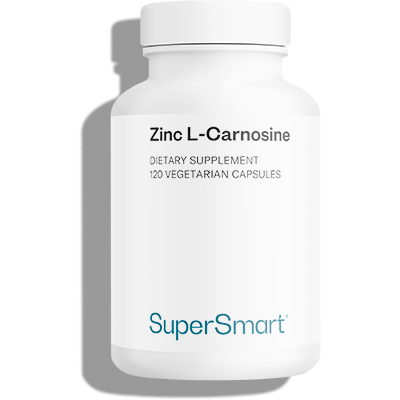
Patented zinc-carnosine complex, protects the stomach from numerous irritants
www.supersmart.com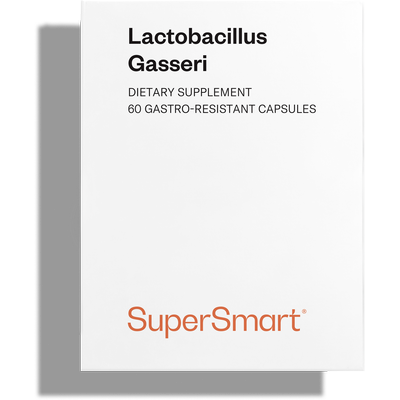
A probiotic strain that’s particularly effective for weight control
www.supersmart.comFurther reading
10-10-2016
In India, turmeric is used to treat a wide variety of ailments including gastrointestinal problems, inflammation, headaches, infections and colds. It is turmeric’s curcuminoid content,...
Read more22-02-2017
Louis XIV famously suffered from severe constipation and his doctors would regularly ask him: ”Comment allez-vous (How are you)?”, when what they actually meant was:...
Read more29-01-2018
Every year, more than 750,000 people die from stomach cancer, one of the five most deadly forms of the disease. The main culprit is a...
Read more© 1997-2025 Fondation pour le Libre Choix
All rights reserved
All rights reserved
Free
Thank you for visiting our site. Before you go
REGISTER WITHClub SuperSmart
And take advantage
of exclusive benefits:
of exclusive benefits:
- Free: our weekly science-based newsletter "Nutranews"
- Special offers for club members only



